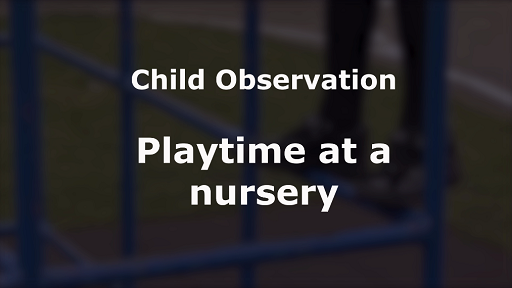2.2 Observing children’s development
Theoretical knowledge alone is insufficient when assessing children’s development. There is also a need to undertake real-world observations of children and relate what is seen to the knowledge and theory appropriate to the child and their context. When observing children it may be possible to determine the extent to which they are developing in line with established norms. It may also be possible to identify delays or problems associated with development. Social workers should be able to identify when a child is at risk from failure to develop and be able to evidence the contributory factors. Practitioners in adult’s services, when working with families where there are children, also need to identify when a child’s developmental needs are not being met in order to make sure that they make referrals to other professionals who can provide support or take action.
There are different types of observation used by social workers: those carried out directly, for example when they come into contact with a family, and those carried out by other professionals in health, education or social care settings attended by the child. Information based on observations from parents, caretakers and family members can also be relevant. Childcare and education professionals are usually well trained in observing and assessing age-appropriate development. Parents and caretakers often know a child better than anyone else and are well placed to notice significant changes in behaviour.
The validity and reliability of observations should always be a primary consideration. For example, a social worker might ask the following questions:
- Observer effects (in research this is called the ‘Hawthorne effect’): has the observed child modified their behaviour in response to the presence of the observer?
- Context: what impact is the environment where the observation takes place likely to have on the child?
- The child: when the observation took place, was the child tired, ill or anxious? If so, how might these states impact on the observed behaviour?
- The observer: who is observing? When relying on reported observation, have the skills, knowledge and reliability of the observer been considered? Is the report of their observation influenced by personal bias or prejudice?
- Frequency: is one observation sufficient to make a judgement about a child’s developmental needs, or would it be helpful to observe the child more than once or in a different context?
These are all useful questions to ask when using evidence drawn from observations. Ultimately, social workers will make judgements based on a breadth of evidence that includes different perspectives, observations and different types of knowledge.
Activity 3 Observing children
In K832, the larger Open University course from which this Starter Kit is drawn, there are several video examples of children at play, incorporating activities for learning about the complex skills required for accurately observing their behaviour. In this activity here, however, you will watch a very brief summary clip of this material, where the identity of the children has been anonymised. The activity is based on an exercise where three professionals are asked to watch the video clips and comment upon the children’s developmental behaviour. In the background of the video is a blurred image of the clip upon which the professionals are commenting.
The three professionals are Mary Bonomaulley (Health Visitor); Margaret Williams (Foster Carer); and Di Dallyn (Social Worker).
As you listen to the comments, bear in mind the following general points:
- Each child is unique and develops at his or her own rate.
- Children of this age are ready to learn – they are active not passive.
- Learning in the different areas of development overlaps and blends together.

